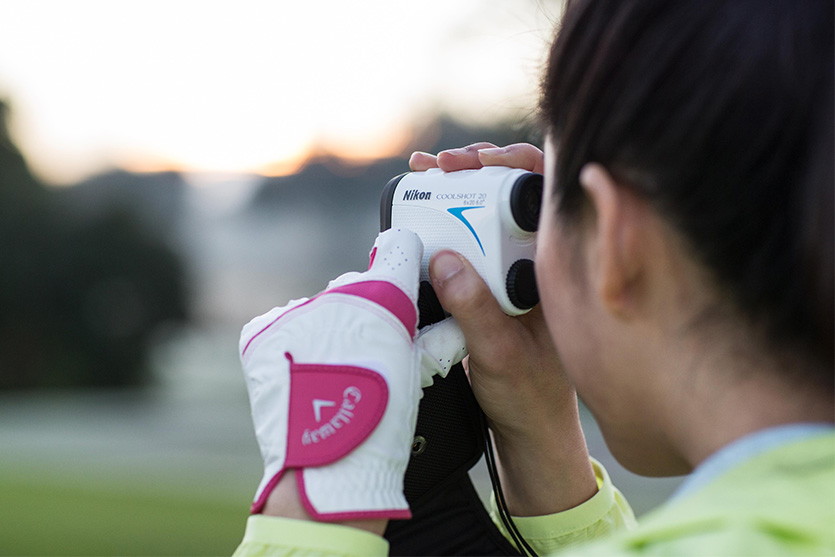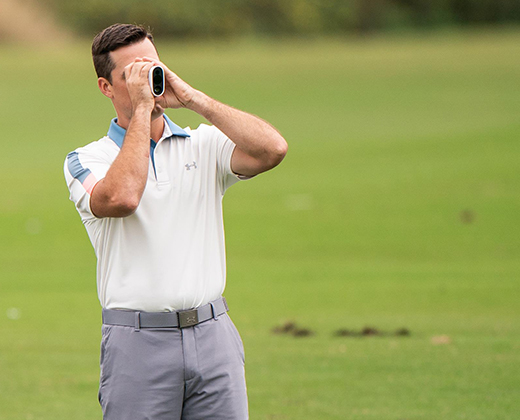How to Buy Golf Laser Rangefinders
Improve your accuracy with a laser rangefinder. Learn the key factors to consider when using these helpful, score-lowering player aids.

Knowing the exact distance between you and your target is invaluable on the golf course.
Searching for a tattered yardage marker in the middle of the fairway isn't always the best option, however. You can help lower your score instead by using a laser rangefinder for more accurate yardages.
Several factors go into choosing the best laser rangefinder for your game. These include the functionality of a rangefinder, as well as the benefits to using one in the first place.
BENEFITS OF USING A LASER RANGEFINDER
From the first tee shot to the final putt, golfers are constantly analyzing the course. Laser rangefinders provide the information you need to execute your shot. Successful shots start with determining a target and choosing the correct club.
Using a laser rangefinder can also help build sound course-management skills. Instead of taking a shot and hoping it stays in bounds, laser rangefinders force you to pick a specific target and play to that point. This type of target-centric mentality can help improve accuracy. It can also help your club and shot selection.
FUNCTIONALITY
As the name suggests, laser rangefinders project a high-frequency laser at your target. Your device measures the time it takes for that laser to bounce off the object and back to you. Within seconds, the rangefinder can calculate and provide a yardage reading.
On average, this measurement is accurate to within +/- 1 yard. Most laser rangefinders only use a “power” button and a “fire” button to take these readings.
Manufacturers have introduced other features to simplify use and increase accuracy. These can include:
Slope technology accounts for elevation change and provides an extra layer of accuracy. This can help eliminate the guesswork in shot planning.
- Most devices include some variation of target acquisition technology. This provides either visual or tactile confirmation when the device has locked in.
The range and complexity of features can increase with price. But every laser rangefinder model can go a long way toward helping golfers use the right club to attack the pin.
OTHER FACTORS TO CONSIDER
You will want to consider the ease of use when choosing laser rangefinders. While their point-and-shoot nature may appear difficult, laser rangefinders are quite user-friendly. They have features designed to help you dial in yardage and lower your score.
You also need to know the range-finding capability of your device. This will help you better analyze the provided information and determine how to best use it on the course. When looking to match a rangefinder's capabilities to your needs, consider the following:
- Simpler laser rangefinders can hone in on targets from 400 to 800 yards away.
- More advanced models can hit a target from 1,000 to 1,300 yards away.
- At their maximum range, many devices are accurate to within +/- 1 yard. But some are capable of accuracy to within +/- ½ yards from as far away as 400 yards.
- Hybrid laser rangefinders show the front and back distances to the green. This can help you understand the pin in relation to other surrounding aspects.
If you plan on competing in tournament play, make sure you review the latest rules before your round. Basic range-finding functions should be legal, but for handicapping purposes only. Functions such as slope and wind speed measurement may be illegal. Most devices allow you to disable any illegal functions before play.
By adding a laser rangefinder to your game, you will be ready to target a new personal low score.








